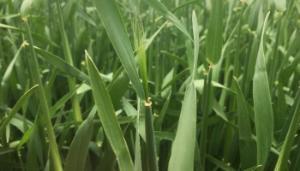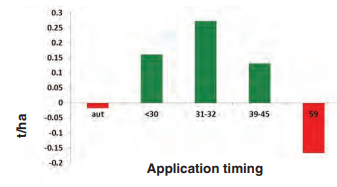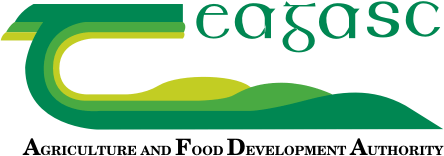04 June 2023
Getting the most from your fungicide spend

Timing is all, but rate and product choice are also important, explain Teagasc Tillage Specialist Shay Phelan and Teagasc Tillage Advisor John Kelly.
In the Teagasc Costs and Returns 2023 figures, projected fungicide costs in winter wheat are €245/ha (€99/ac), €145/ha (€59/ac) in winter barley and €106/ha (€42/ac) in spring barley. These figures indicate an average 10% increase in cost over 2022.
With grain prices likely to be significantly lower this harvest, getting a good return on your fungicide investment is key. Complicating the issue is that over recent years we have seen a reduction in the choice of active ingredient – either due to (de)registration or the development of resistance.
Products that are still available must be used wisely. To achieve the optimum effect, there are three critical areas:
- Product choice;
- Optimum rate;
- Optimum timing.
Optimum choice
With the loss of key actives like epoxiconazole and chlorothalonil, the options for septoria control in winter wheat, for example, rely heavily on prothioconazole (Ascra Expro, Elatus Era, Univoq etc.) or mefentrifluconazole (Revystar). All are mixed with SDHI/Qii chemistry to improve activity and to protect the azoles. Folpet (Arizona, Phoenix, etc) has replaced chlorothalonil (Bravo) as a multisite, although its performance is not as effective.
Alternating the chemistry is important from a resistance management point of view. Where Revystar is used as a leaf three application in wheat, use an alternative product at the flag leaf. Folpet should be applied at both timings.
In the case of barley, prothioconazole products such as Proline dominate. They should not be applied on their own, as to do so will increase the risk of resistance build-up. The partner product can be either a strobulurin, e.g. Comet or an SDHI, e.g. Siltra. In oat crops, prothioconazole will form the basis of most programmes, with a partner product such as a strobulurin or SDHI, e.g. Elatus Era. Tebuconazole, e.g. Fezan can also be used to control rust if needed.
Optimum rate
Optimum application rate will differ depending on whether the crop is barley, oats or wheat. In barley, it has been shown that 50% rates of azoles will give adequate control when mixed with a partner product. However, for ramularia control, a full rate of folpet, i.e. 1.5 l/ha, will be needed. In oats, reduced rates can be used of the prothioconazole (50% to 60%) or tebuconazole (60%) depending on the disease pressure. They should be mixed with a strobilurin for rust or a mildewicide, e.g. Midas, if mildew is present. These can also be used at reduced rates depending on the disease pressure.
Wheat crops will need a robust rate to control septoria, especially in wet weather. 80-100% rates are generally what is recommend to use in a mixture with folpet at 100% rate. These rates are required to ensure that crops are protected in the intervals between leaf three and leaf one and again from leaf one to the head spray. Applying lower doses will reduce the persistency of the products and the crops will be unprotected for a period of time.
Optimum timing
Optimum timing is probably the most important of the three points. Fungicides applied at the wrong time will result in either poor control or the need for an extra application. Either can prove costly. It’s important to remember that the disease strategies in wheat, barley and oats are different. In wheat, for example, disease control should really start as leaf three is fully emerged. The idea is to protect the upper canopy where most of the yield comes from. This should then be followed with another application, usually about three weeks later, as the flag leaf (leaf one) is fully emerged. The final application mid-flowering aims to protect the crop as long as possible.
In these timings, you are trying to coat the leaves in fungicide to protect them as much as possible. Apply too early and not all of the leaf is protected, apply too late and some of the leaf may already be infected. T0 (leaf four) applications rarely showed improved control of septoria when Bravo was available, so there is little justification for using a T0 this year.
Barley
Disease control in barley is completely different. At the early stage you are trying to protect tillers, as diseases such as net blotch and rynchosporium will kill them and reduce yield. Many barley crops will get a fungicide at late tillering to protect these tillers, as there is a clear correlation about the number of tillers produced and overall yield.
The final application is targeting ramularia, which is a stress-induced disease, which can only be controlled preventatively. There is no curative activity from any chemistry on ramularia. Therefore, trials in Teagasc and the UK have clearly shown that the final application at the awns emerging stage of the crop is the optimum timing.
Figure 1: Fungicide timing response in winter barley

These trials have also shown that leaving that final application until the heads are fully emerged will allow ramularia to infect the crop and reduce yield. In oats, generally the strategies used aim to prevent the build-up of mildew and crown rust, with many crops receiving a two or three-spray strategy depending on conditions. In winter oats, there is typically a three-spray strategy at GS 30/31 followed by GS32 and the final application as the heads are half emerged GS 45-55. In spring oats, there are usually two applications at GS31/32 and heads half emerged.
Farmer focus: Derek Strong, Co. Offaly
Derek Strong, who farms in Clonmore, Tullamore, Co. Offaly, pays great attention to fungicide timings. He grows both winter and spring cereals and this year is also growing beans as a break crop. Barley and wheat are dried on farm for sale during the winter, with some grain forward sold before harvest. The majority of Derek’s crops are established using min-till, which has reduced labour and costs compared to a conventional system.
“The spring crops were sown a little later than normal, similar to 2018, but I’m hopeful that the yields will be better this year,” Derek said.
Derek is growing Tardis winter barley, which has a relatively good disease resistance profile. However, he still applies his fungicide timings to the key growth stages. On this, he said: “We constantly monitor crops in the days and weeks coming up to those applications.
Slight changes
Like many farmers in the area, Derek has made slight changes to his fungicide applications over recent years. The final timing on barley is targeted at awn emergence. “I don’t like waiting until the heads are out on the barley anymore,” he said. “I have looked at the research and seen that this was leaving the crop at risk from ramularia infection, potentially reducing yields.”
This article first appeared in the May/June edition of Today’s Farm.
Also read: Strip-till establishment with Michael Grace in Clane, Co. Kildare
